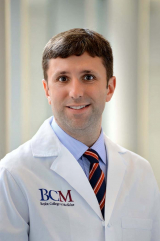Exploring the Intersection between Childhood Cancer and Birth Defects to Identify Novel Cancer Predisposition Syndromes

Background
One of the strongest risk factors for childhood cancer is being born with a birth defect. This risk is present not only among children with major congenital malformations, but also among children with minor birth defects. In fact, approximately 10% of childhood cancers may be attributed to having a birth defect. Exploring the intersection of birth defects and childhood cancer is likely to provide valuable insights into what causes childhood cancer, and may also provide information that can be used to improve screening strategies in cancer prevention clinics. As an estimated 7.9 million children worldwide are born with a congenital malformation per year, the public health implications of identifying why some of these children develop cancer are substantial. In spite of these recognized patterns, much work remains in characterizing associations among specific birth defect-childhood cancer combinations and in discovering novel cancer predisposition syndromes.
Project Goal
In practice, identifying birth defect-childhood cancer patterns is challenging because large population-based cohorts with sufficient numbers of birth defects are necessary to allow for meaningful estimation of childhood cancer risks. Because of this, we will leverage existing collaborative relationships with high-quality population-based birth defect and cancer registries in Texas, North Carolina, and Utah with information on over 8 million births to: 1) find novel birth defect-childhood cancer associations and 2) create a family-based cohort for genomic analyses. This is a unique and timely opportunity to aid in the discovery of novel cancer susceptibility syndromes. Children with these disorders will benefit from targeted cancer screening and surveillance programs.To date, Dr. Lupo and his team learned that even relatively minor birth defects have a very strong risk of cancer, and that this risk is greatest during the first few years of life. His team has built a multi-state cohort to identify novel birth defect-childhood cancer patterns. This is a vital first step in understanding why certain children are more likely to develop cancer. He has been surprised most by the enthusiasm of families to participate in this project. They are dedicated to helping others who are confronted (or will be confronted) with the same issues they are facing.
Next Steps
Dr. Lupo and his team will continue to explore our data to find novel birth defect-childhood cancer patterns and identify the genes that underlies these conditions. They are also interested in exploring how children with birth defects respond to treatment and if their outcomes are similar to children without these conditions. Ultimately, Dr. Lupo hopes that by identifying the genes that lead to cancer among children with birth defects, screening and survillance programs can be implemented for children who are at the greatest risks.
"Being born with a congenital malformation, even if it is relatively minor, is one of the strongest risk factors for developing childhood cancer. In spite of this, very little is known about why these conditions overlap. The Alex’s Lemonade Stand Epidemiology Grant will give us the unique opportunity to build a multi-state population-based resource for exploring the molecular underpinnings of these conditions, which we hope will improve cancer screening and prevention efforts." ~Philip Lupo, PhD

